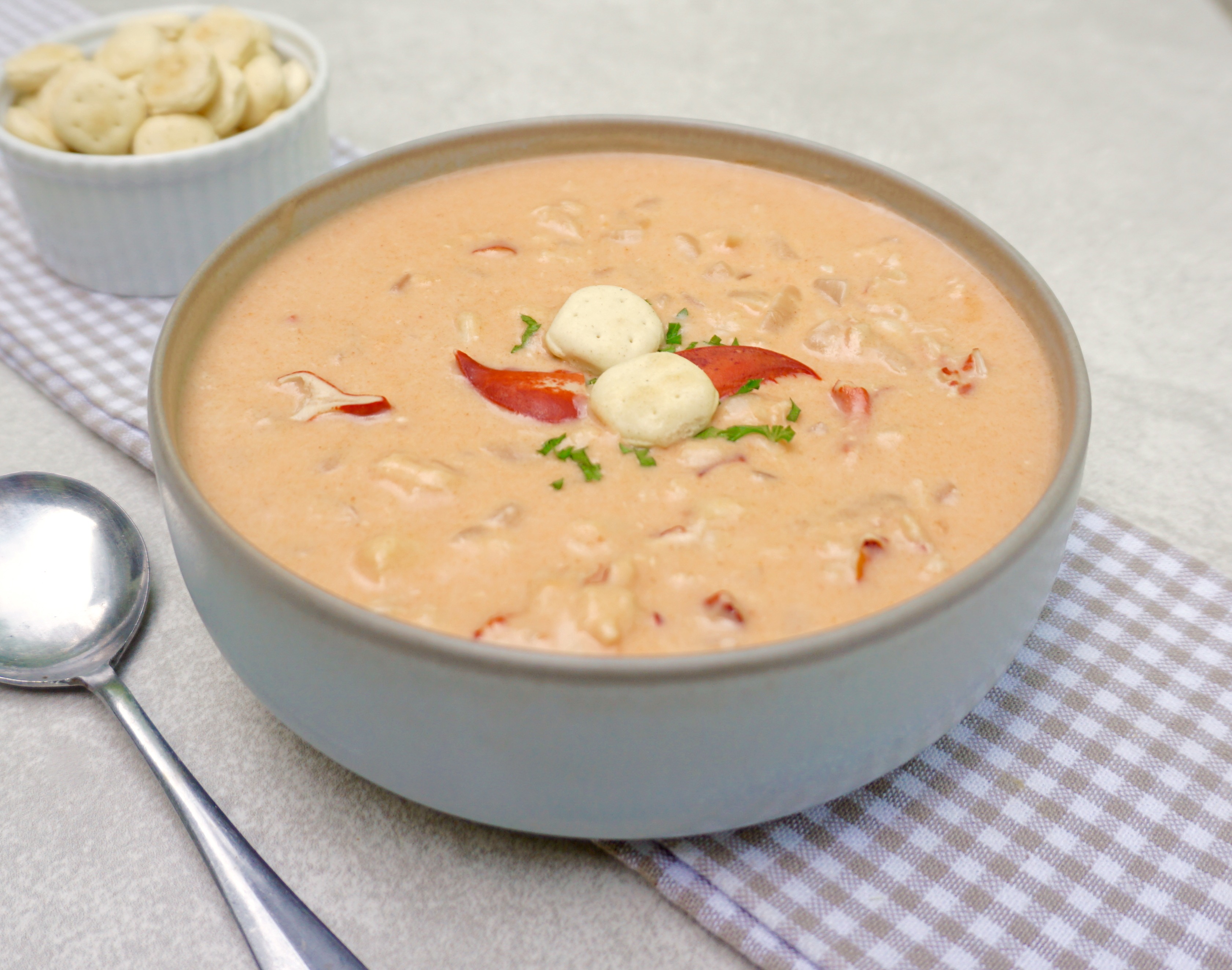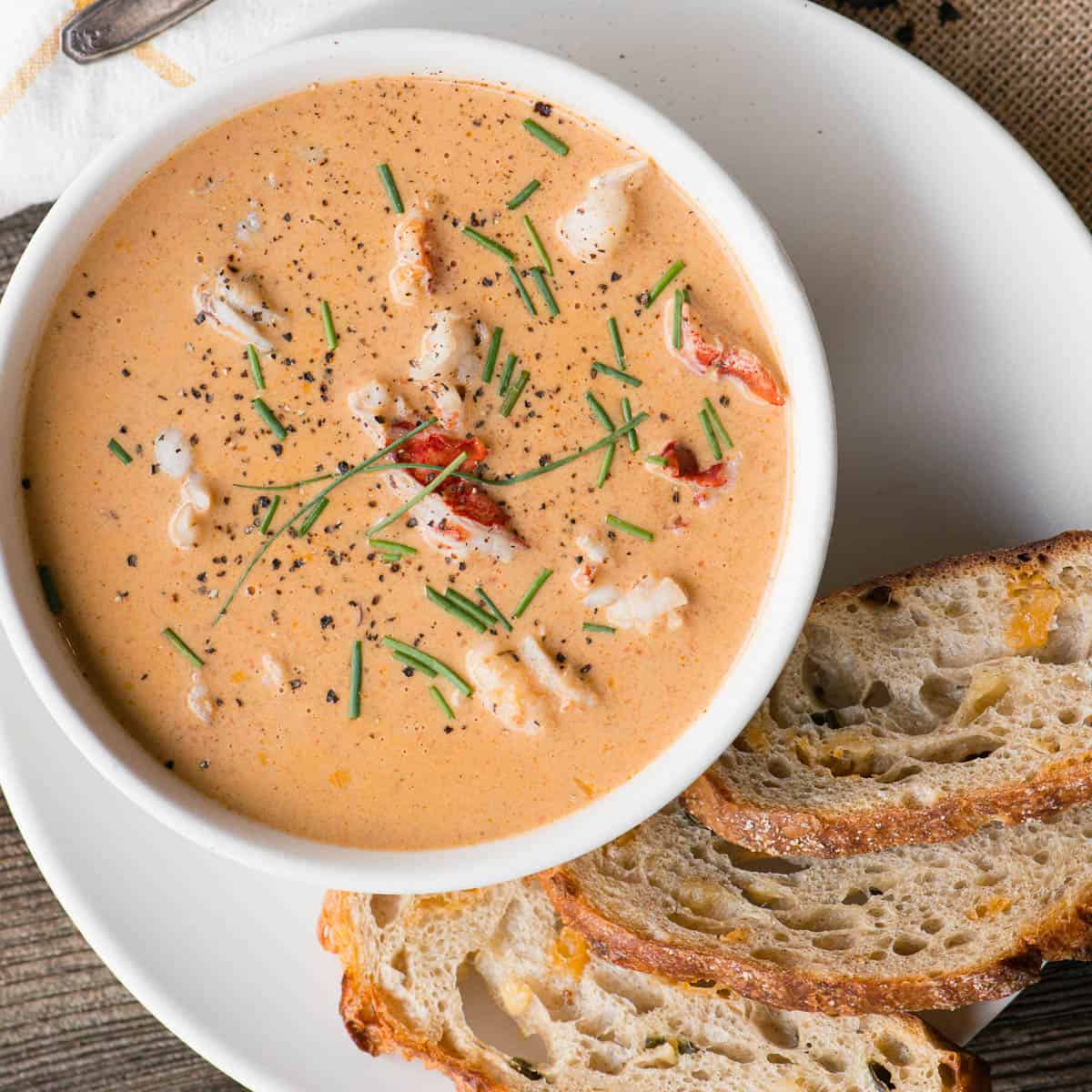Embark on a culinary adventure as we delve into the delectable world of lobster bisque. This rich and flavorful soup has captivated taste buds for centuries, tantalizing palates with its harmonious blend of seafood, herbs, and spices. Prepare to savor the essence of the ocean as we explore the intricacies of crafting this exquisite dish.
Lobster bisque is not merely a soup; it is an expression of culinary artistry. Its velvety texture, vibrant color, and complex flavor profile elevate it to the realm of gastronomic masterpieces. Whether enjoyed as a sophisticated appetizer or a comforting main course, lobster bisque promises an unforgettable culinary experience.
Lobster Bisque Ingredients
To create a delectable lobster bisque, an array of ingredients is required. These ingredients work harmoniously to impart a rich, savory flavor and velvety texture.
Here is a detailed list of the essential ingredients you will need:
Seafood
- 1 live lobster (1 1/2 to 2 pounds), steamed and shelled
- 1 cup lobster stock or fish stock
Vegetables
- 1 tablespoon olive oil
- 1 medium yellow onion, chopped
- 2 medium carrots, chopped
- 2 medium celery stalks, chopped
- 2 cloves garlic, minced
Dairy and Seasonings
- 1/4 cup all-purpose flour
- 3 cups vegetable broth
- 1 cup heavy cream
- 1/2 cup dry white wine (optional)
- 1 bay leaf
- 1 teaspoon dried thyme
- Salt and black pepper to taste
Cooking Methods
Creating lobster bisque involves a meticulous process that can be divided into three main stages: preparing the lobster, making the broth, and blending the soup. Each stage requires specific techniques and attention to detail to achieve the desired flavor and texture.
Preparing the Lobster
Begin by separating the lobster tail from the body. Crack the claws and remove the meat. Chop the lobster meat into small pieces and set aside. Remove the tomalley (greenish-brown substance) from the lobster head and reserve it for the broth.
Making the Broth
In a large pot, sauté diced vegetables (such as onions, carrots, and celery) in butter until softened. Add the lobster shells and tomalley, and cook for a few minutes to release their flavors. Deglaze the pot with white wine and let it simmer until reduced by half.
Add fish stock or water to cover the lobster shells. Bring to a boil, then reduce heat and simmer for 30-45 minutes. Strain the broth through a fine-mesh sieve into a clean pot.
Blending the Soup
In a blender or food processor, combine the lobster meat, strained broth, and cream. Purée until smooth and creamy. Season with salt, pepper, and cayenne pepper to taste.
Transfer the blended soup back to the pot and bring it to a simmer. Adjust the consistency by adding more fish stock or cream as needed. Serve hot, garnished with chopped chives or parsley.
Flavor Profiles

Lobster bisque boasts a distinctive flavor profile that tantalizes the taste buds with its harmonious blend of seafood, herbs, and spices.
The rich, creamy base, infused with the delicate sweetness of lobster meat, forms the foundation of the soup’s umami-laden character. Aromatic herbs like thyme, bay leaf, and parsley add earthy notes, while a hint of acidity from lemon juice or white wine balances the richness, creating a symphony of flavors that lingers on the palate.
Seafood
The star ingredient, lobster, lends its signature sweetness and oceanic essence to the bisque. Its tender meat, cooked in a flavorful broth, imparts a delicate yet pronounced seafood flavor that permeates the soup.
Variations and Adaptations
Lobster bisque is a versatile soup that can be customized to suit various tastes and preferences. Here are some popular variations and adaptations:
Ingredients Variations
- Seafood substitutions: Shrimp, crab, or scallops can be used instead of lobster to create a different flavor profile.
- Vegetable additions: Chopped carrots, celery, or onions can be added for extra texture and sweetness.
- Herbs and spices: Experiment with different herbs and spices, such as thyme, rosemary, or paprika, to enhance the flavor.
- Creaminess variations: Heavy cream, crème fraîche, or evaporated milk can be used to adjust the soup’s thickness and richness.
Technique Adaptations
- Blender vs. immersion blender: Using a blender creates a smoother, velvety texture, while an immersion blender allows for more control over the chunkiness.
- Straining vs. no straining: Straining the soup removes any shells or pieces of seafood, resulting in a more refined texture.
- Seafood stock variations: Homemade lobster stock, fish stock, or vegetable stock can be used as the base for the bisque.
Regional and Cultural Variations
- French bisque: The classic French bisque is made with a rich lobster stock and a creamy base, often garnished with chopped chives or parsley.
- American bisque: American lobster bisque tends to be thicker and more flavorful, with the addition of spices like cayenne pepper or Old Bay seasoning.
- Mediterranean bisque: Mediterranean-inspired lobster bisque often incorporates ingredients like tomatoes, olives, and capers, adding a tangy and aromatic touch.
Presentation and Garnishes
Lobster bisque deserves an elegant presentation that complements its luxurious flavor. By carefully arranging the bisque in appropriate servingware and adding tasteful garnishes, you can elevate the dining experience and create a visually appealing dish.
Choose shallow bowls or soup plates with a wide rim to showcase the vibrant orange hue of the bisque. White or cream-colored plates provide a classic and elegant backdrop for the soup. Consider using soup bowls with handles for easy handling and a comfortable dining experience.
Garnishes
Appropriate garnishes can enhance the visual appeal and flavor of lobster bisque. Here are some suggestions:
- Lobster meat: Chopped or shredded lobster meat adds a luxurious touch and provides a burst of flavor in every spoonful.
- Chives: Finely chopped chives add a fresh, herbaceous note and a vibrant green color.
- Tarragon: Tarragon leaves provide a subtle anise-like flavor that complements the richness of the bisque.
- Truffle oil: A few drops of truffle oil add a sophisticated aroma and an earthy, nutty flavor.
- Croutons: Small, crispy croutons add a textural contrast and provide a satisfying crunch.
- Whipped cream: A dollop of whipped cream on top of the bisque creates a creamy and indulgent touch.
Table Setting and Serving
For a formal presentation, consider setting the table with white linen napkins and elegant silverware. Serve the bisque piping hot in preheated bowls. Place a small spoon on the side for easy eating.
Nutritional Value and Health Benefits

Lobster bisque is not only a culinary delight but also a nutritional powerhouse. This creamy soup packs a punch of essential nutrients and vitamins that contribute to overall well-being.
One serving of lobster bisque typically provides:
- Good source of protein: Essential for building and repairing tissues
- Rich in vitamin A: Supports vision, immune function, and skin health
- Contains vitamin C: A potent antioxidant that protects against cellular damage
- Provides calcium: Vital for bone health and muscle function
- Low in calories and fat: Makes it a relatively healthy option compared to other creamy soups
Potential Health Benefits
In addition to its nutritional content, lobster bisque may offer potential health benefits:
- Anti-inflammatory properties: Lobster contains astaxanthin, a carotenoid with antioxidant and anti-inflammatory effects that may reduce inflammation in the body.
- Improved cardiovascular health: Lobster bisque is a good source of omega-3 fatty acids, which have been linked to reduced risk of heart disease.
- Brain health: Vitamin A and C in lobster bisque contribute to cognitive function and protect against neurodegenerative diseases.
- Immune system support: The presence of vitamin C and antioxidants in lobster bisque helps boost the immune system and fight off infections.
Outcome Summary
Our exploration of lobster bisque has illuminated its culinary significance and versatility. From its origins as a humble fishermen’s stew to its transformation into a gourmet delicacy, this soup has stood the test of time. Whether you savor its classic preparation or experiment with innovative variations, lobster bisque remains a testament to the power of culinary creativity.
As you embark on your own lobster bisque adventures, may your creations bring joy to your table and inspire a newfound appreciation for this culinary treasure.
Q&A
What is the key to achieving a velvety smooth texture in lobster bisque?
Straining the bisque through a fine-mesh sieve or cheesecloth removes any lumps or impurities, resulting in a silky-smooth consistency.
Can I substitute vegetable broth for seafood broth in lobster bisque?
While seafood broth imparts a more intense flavor, vegetable broth can be used as a suitable alternative. Adjust the seasonings accordingly to enhance the depth of flavor.
How can I enhance the flavor of lobster bisque without overpowering the delicate seafood taste?
Sautéing the vegetables before adding them to the broth caramelizes their natural sugars, adding a subtle sweetness and richness that complements the lobster flavor.
